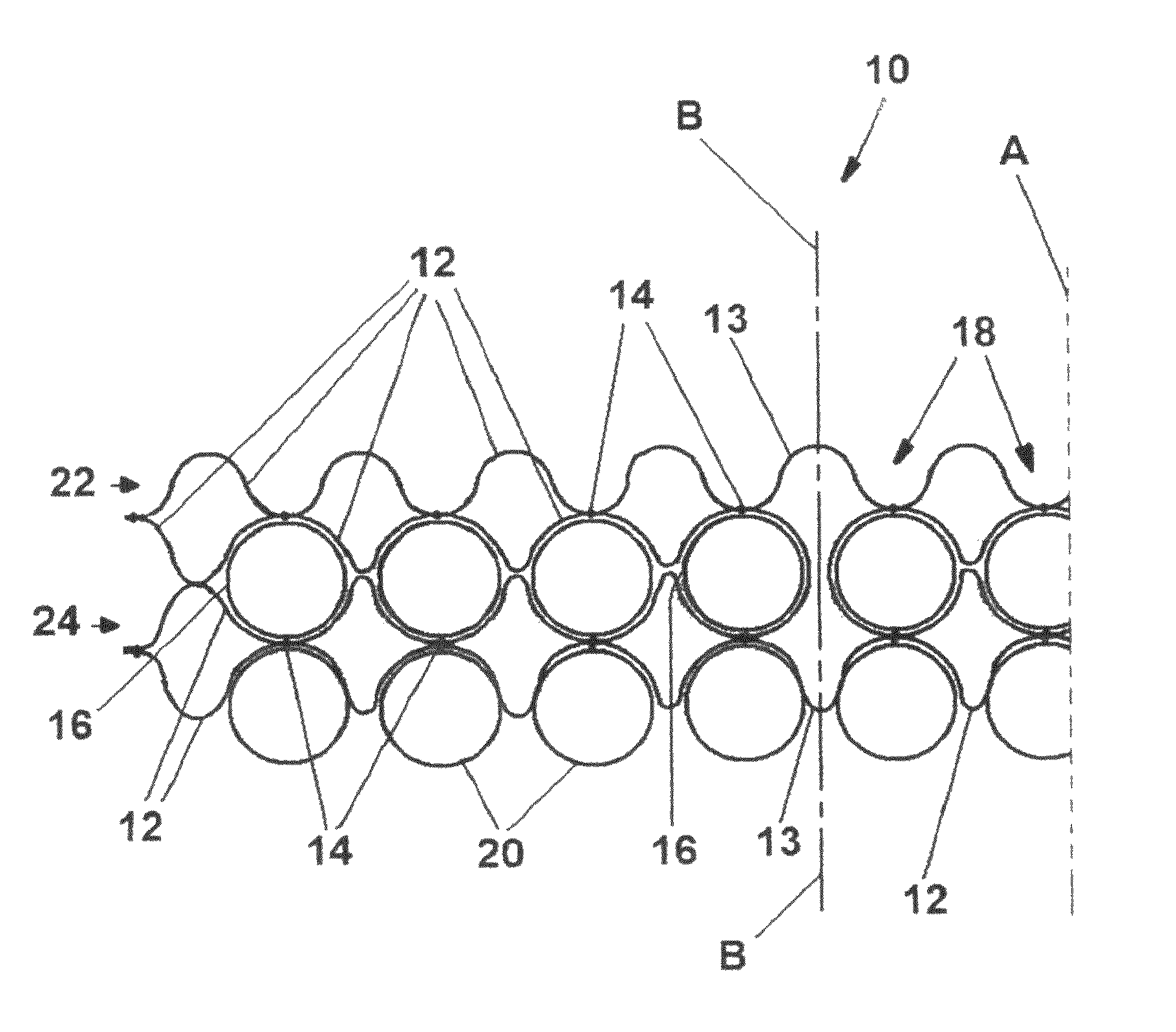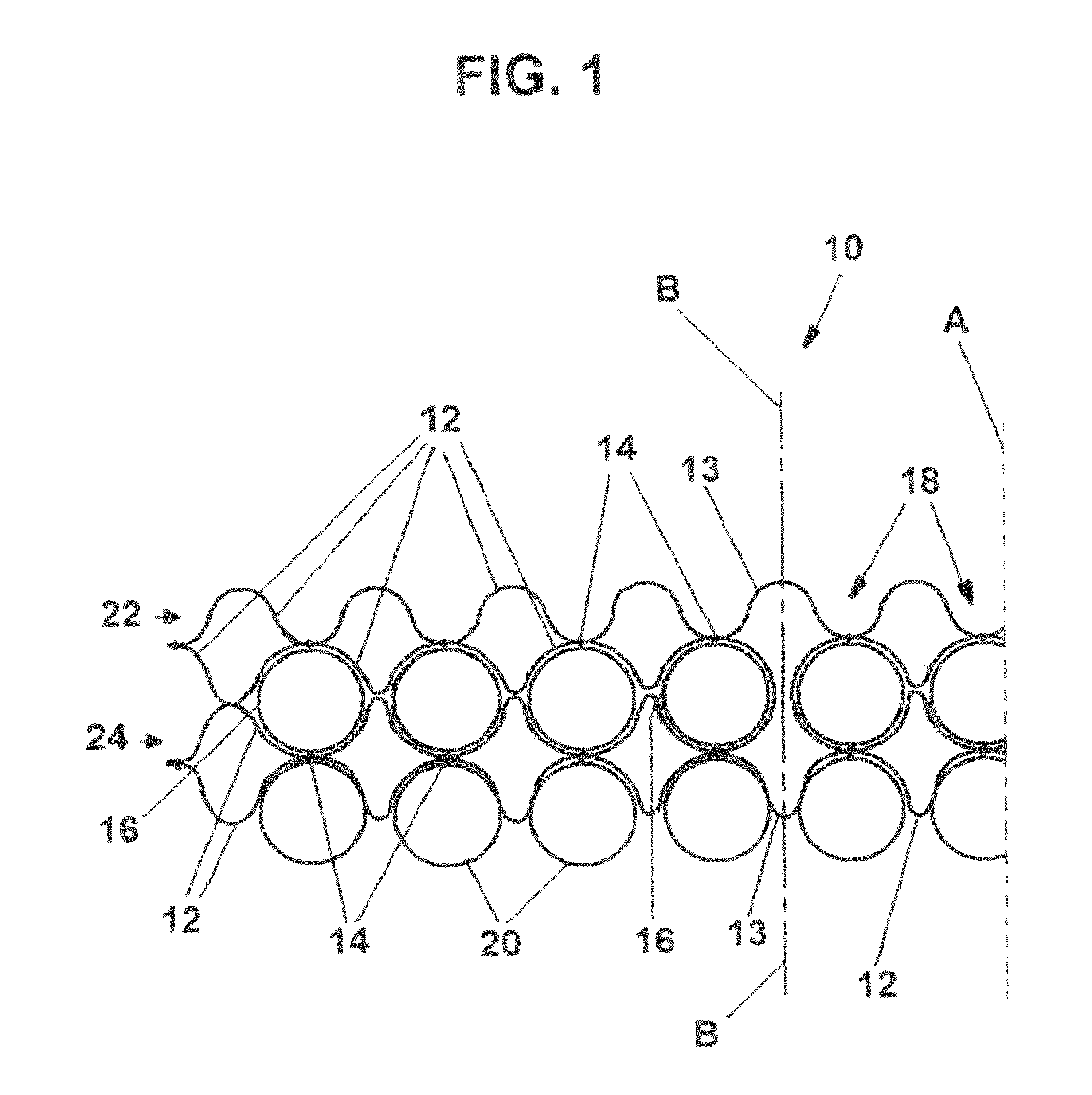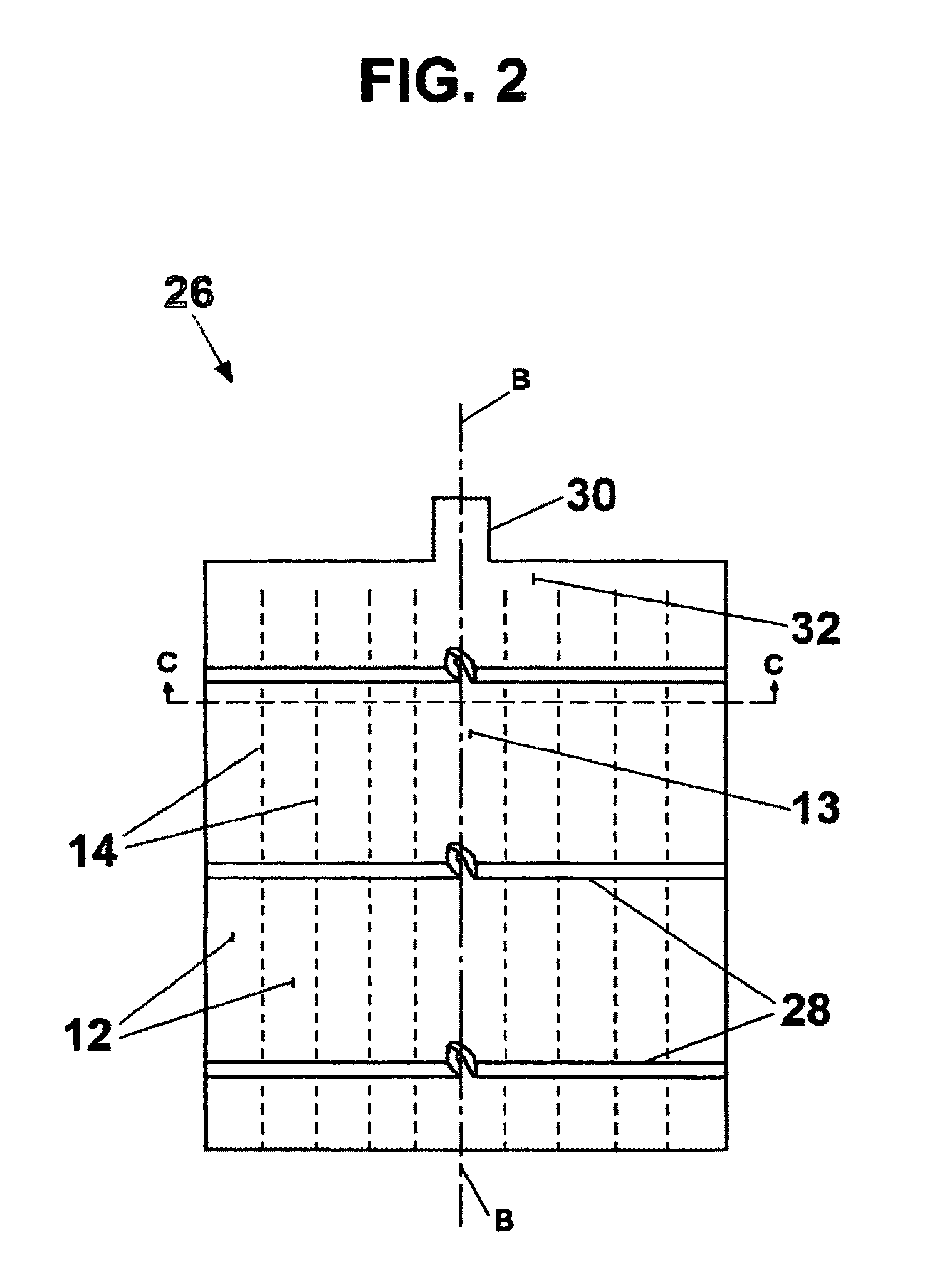Stormwater filter bag
a filter bag and stormwater technology, applied in the field of sediment filter, can solve the problems of large “footprint” required for the enclosure, insufficient water pressure, and completely negating the filter action
- Summary
- Abstract
- Description
- Claims
- Application Information
AI Technical Summary
Benefits of technology
Problems solved by technology
Method used
Image
Examples
Embodiment Construction
FIG. 1 is a schematic sectional view at section line C-C of FIG. 2 of a portion of the filter assembly 10 of the preferred embodiment of the invention. There are additional filter tubes 12 which project to the right of line A in FIG. 1, but they are mere repetitions of those seen in FIG. 1. Filter tubes 12 are made of filter material that is permeable to liquid, and which in the preferred embodiment of the invention has filter openings of 0.150 mm and a water flow rate of 6 gallons per minute per square foot. Such material is available from TenCate Geotube of Commerce, Ga. and is designated GioLon GT 1000. Filter tubes 12 and 13 are made from sheets of the permeable material which are joined together by seams 14 that are spaced apart by appropriate distances to form parallel tubes of the desired size. In the preferred embodiment the seams are sewn with thread designated B-138 bonded Kevlar by Cansew, Inc. of Montreal, Quebec, Canada. Tube 13 is configured to actually be the equivale...
PUM
| Property | Measurement | Unit |
|---|---|---|
| diameter | aaaaa | aaaaa |
| area | aaaaa | aaaaa |
| area | aaaaa | aaaaa |
Abstract
Description
Claims
Application Information
 Login to View More
Login to View More - R&D
- Intellectual Property
- Life Sciences
- Materials
- Tech Scout
- Unparalleled Data Quality
- Higher Quality Content
- 60% Fewer Hallucinations
Browse by: Latest US Patents, China's latest patents, Technical Efficacy Thesaurus, Application Domain, Technology Topic, Popular Technical Reports.
© 2025 PatSnap. All rights reserved.Legal|Privacy policy|Modern Slavery Act Transparency Statement|Sitemap|About US| Contact US: help@patsnap.com



